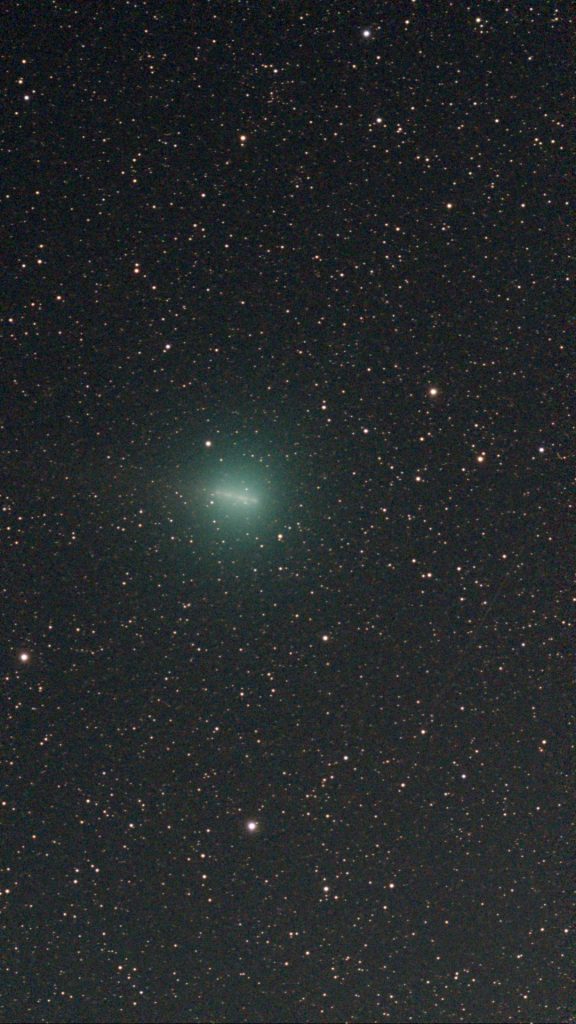SAS Astronomy Pictures of the Month [November, 2025]
Comet Images from our Star Watch! The Elephant Trunk in Cepheus!
C/2025 A6 (Lemmon) is a comet that was discovered in January 2025 and is currently visible, though increasingly difficult to see due to factors like a bright Moon. It will pass its perihelion (closest point to the Sun) on November 8, 2025, after which its orbit will change, delaying its next appearance until approximately the year 3175.
Steve took this spectacular photo during our Star Watch on Oct. 26, 2025. He stacked 47 10s exposures with an IRCUT filter to get this wonderful image right on site with his Seestar telescope!
Comet C/2025 A6 (Lemmon) in Ophiuchus by Stephen Bickford
C/2025 R2 (SWAN) is a long-period comet discovered in September 2025 by Vladimir Bezugly from SWAN imagery on the SOHO spacecraft. It reached its closest approach to the Sun (perihelion) on September 12 and to Earth on October 20.
Steve took this beautiful image of this comet at our Star Watch on Oct. 26, 2025! He stacked a total of 31 20s exposures live using his Seestar telescope right on site! You can see the comet trail even in a single 20s frame. Here it’s clearly moved against the star field after only 10 minutes of exposure!
Comet C/2025 R2 (SWAN) by Stephen Bickford
This image was taken by David Murray using his 6 inch Celestron f/10 and his ASI2600mm mono camera, combining L, R, G and B images to get this pseudocolored image of the Elephant Trunk Nebula, located in Cepheus.
The Elephant Trunk Nebula gets its name from its long, sinuous column of dark dust and gas, which curves outward from the bright surrounding emission region like an elephant’s trunk. The “trunk” is a dense globule of cooler material being eroded and compressed by the intense ultraviolet radiation and stellar winds from nearby massive stars. The nebula is illuminated by the massive O-type star HD 206267, a bright, hot star in the open cluster Trumpler 37. The strong radiation from HD 206267 ionizes the surrounding gas, carving out the large bubble of IC 1396 and sculpting the dense “trunk” regions into a distinctive pillar shape. There are also several newborn protostars and young stellar objects (YSOs) embedded within the dust — evidence of active star formation triggered by the shock fronts from nearby massive stars.
Elephant Trunk Nebula by David Murray



